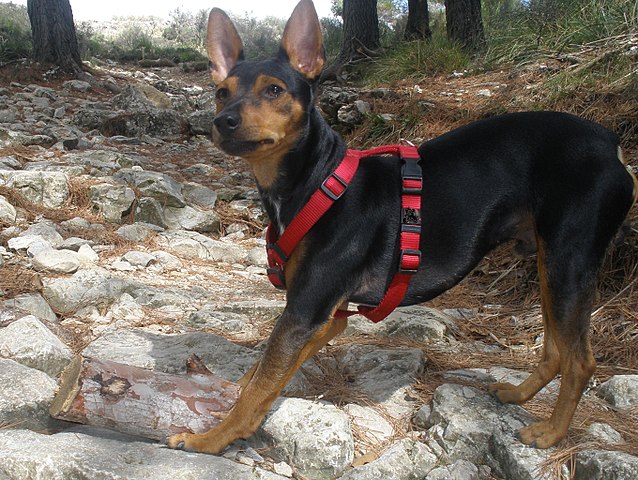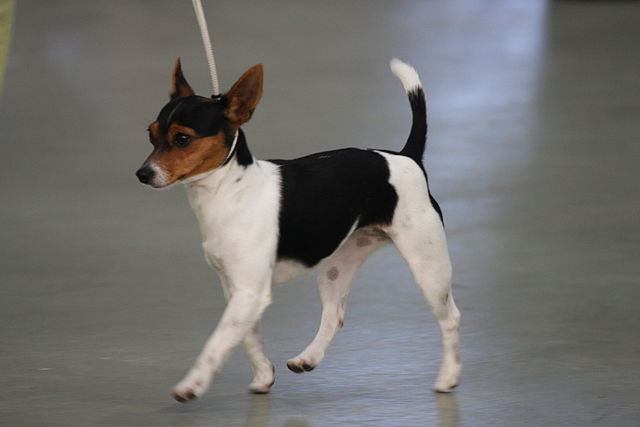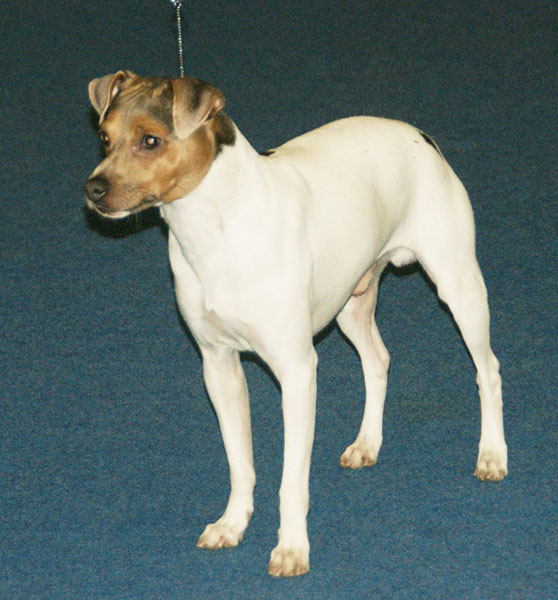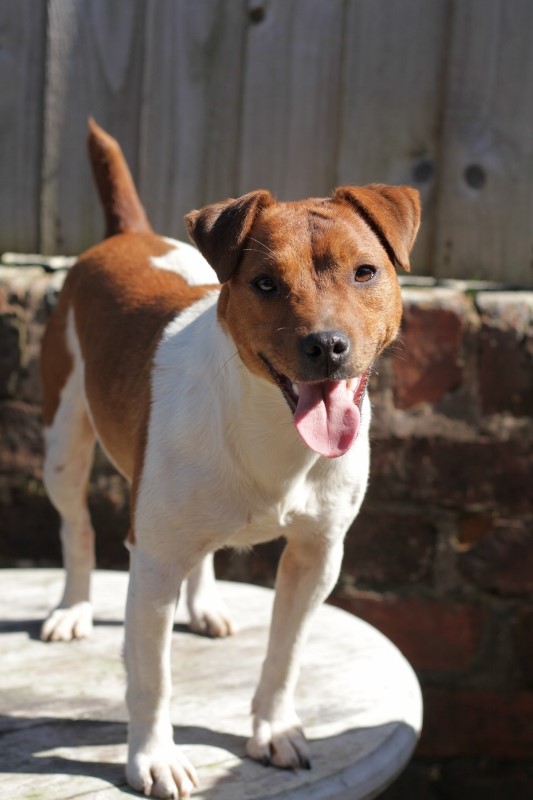The Irish Terrier is one of the lesser-known breeds of the terrier group, and his fanciers know him as their best-kept-secret. He has been referred to as “perhaps the finest dog on Earth.” Once a person owns an Irish, they rarely want to live without one again! This merry breed is versatile, loyal and hardworking – also possessing a certain grace and politeness when out in public. Their size makes them easy to transport, as well as take up little space in the house – although their personality is huge and their bodies are very hardy. Athletic, these are great swimming dogs! They also have been used by some as gun dogs (they aren’t gun-shy and many have “soft mouths” for retrieval), as rodent exterminators and in a vast array of other dog sports and activities.
Loyal and affectionate to his family (including children), the Irish Terrier will even exercise his duty as guard dog if it become necessary. Don’t let his size fool you, this dog has a ton of attitude and won’t back down if he feels his owner is in danger! In fact, members of this breed were used during World War 1 as war dogs, both as sentries and guards. They were also used to transfer messages back and forth across the trenches – so bravery runs in their veins! Aside from actual danger, the Irish may also take it upon himself to defend the house from postal workers, delivery men and your friends – this is a territorial breed.
Scrappy is one term used to describe the Irish Terrier’s temperament when it comes to other dogs. While the Irish may or may not start a fight, this breed will never back down once confronted. When it comes to fighting (whether canine or other), these dogs will never take their own safety into account and may rush into situations that might even be dangerous. When hurt, they aren’t apt to show they are in pain. It is important for owners of this breed to never allow them to get in this type of dangerous circumstance.
This is a very healthy breed in general and most Irish Terriers do not suffer from hereditary problems. This said, no breed (or mix) is 100% free of health issues, nor is any dog guaranteed not to have an emergency accident. There is a very rare condition in the breed called Cystinuria which can occur, but very few dogs inherit this disease. Prospective owners should know that their chances of spending a lot of money at the vet are lower with an Irish, but flukes do occur. But for those wanting a breed with a statistically low chance of congenital disease, the Irish Terrier is a good choice. 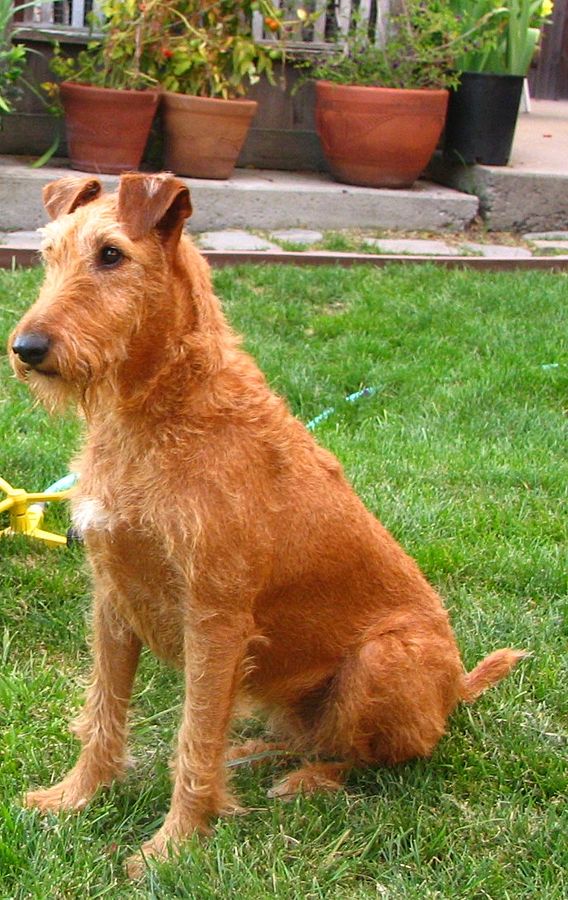
The Irish Terrier is intelligent, although when it comes to training he can be stubborn! This goes back to his roots as a farm dog, bred to work his jobs independently of humans. A good trainer will find what motivates the dog and use it to their advantage. As most Irish are food motivated, treats often help! Once the dog begins to understand the rules of the game, he may (or may not) decide he really enjoys pleasing his owner. Even Irish Terriers that enjoy obedience suffer from occasional “selective memory”. It’s important to note that despite their terrier demeanor, this breed has a sensitive side and needs to be treated fairly.
Irish Terriers are always solid red in color, although the shade may be anywhere from light wheaten to radiantly deep red. Their wiry coats (hypoallergenic to some people, not to others) shed very little and require only occasional brushing, and even less frequent bathing. Like most wire-haired terriers, however, they will need to be hand-stripped a couple of times a year in order to keep the correct texture of coat. This is a method that can be learned (if the owner is so inclined), or the dog can be taken to a groomer to have it done. Note, however, that not every groomer knows how to do this technique and may naively just want to shave the dog. This is a sign to go elsewhere! The texture of the coat protects the dog from brambles and other types of terrain, in addition to it being a key feature of the breed. Shaving will ruin this texture.
The activity level of the Irish is moderate. They need regular exercise but – as long as it is provided to them, they will not be hyperactive in the house. Many Irish Terriers love to romp and play in a safely fenced backyard, although taking them out for consistent walks is best. It should be noted that terriers like to dig and the Irish is no exception! These “red daredevils” will dig holes all over the yard, and may also try to dig under the fence to crawl out. Some dogs need to be supervised to be certain they can’t escape (either by digging under or crawling over). Invisible fencing is not recommended for this breed.
Most Irish Terriers don’t mind loud noises or active households and some even seem to revel in “a bit of chaos”. This might be because of their mischievous side – they can be excellent food thieves and have an easier time stealing when everyone is already distracted! The breed also excels at grabbing objects with their paws… and then running off with the prize.
